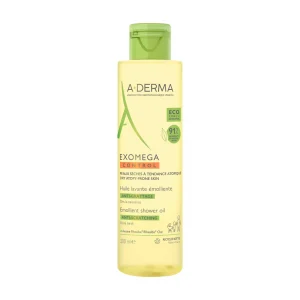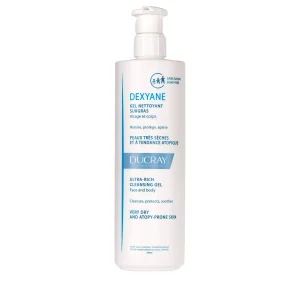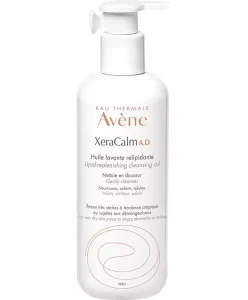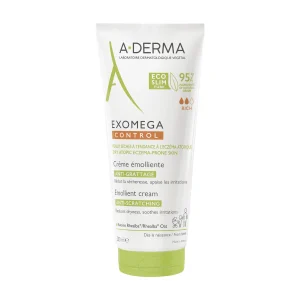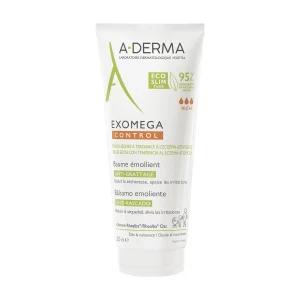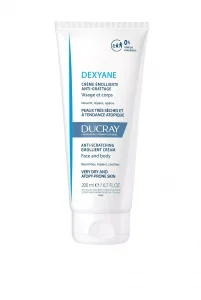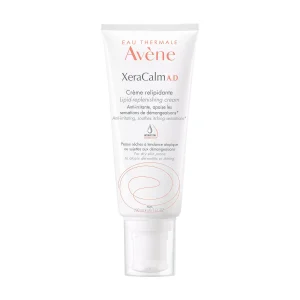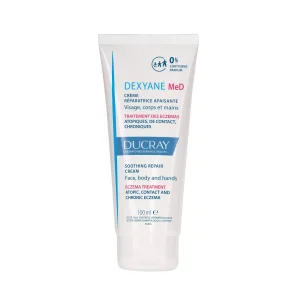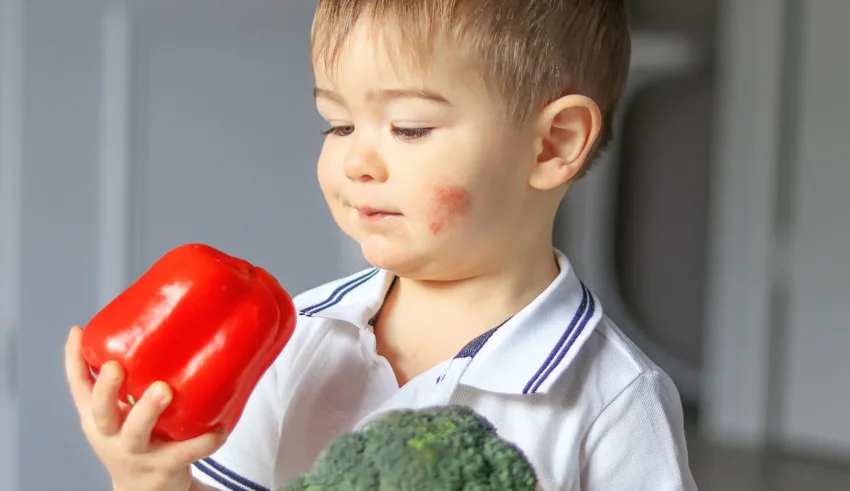
If your baby is fussy or irritable, constantly rubbing his skin, and has a rash that looks pink or red, or reddish-brown, purple or grayish, he may be suffering from eczema. The unpredictable flare-ups and cycles of itching and scratching are exhausting for your little one and maddening for parents. So we reached out to the dermatologist Dr. Moamen Faroun to shed some light on how parents can understand and treat their baby’s eczema.
What makes your baby’s skin itch?
Check out the list of triggers below to find out the underlying cause of eczema flare-ups.
1- Baby’s diet
Your gut has a lot to do with how inflammation manifests itself in the body. Common food allergens like eggs, soy, nuts, dairy, and shellfish are linked to nearly 50% of eczema cases in children.
2- Mom’s diet
If your baby is not yet eating solid foods, he or she may be ingesting them through breastfeeding.
3- Other allergens
There is a whole world of dust mites, seasonal pollens, molds, and germs that can cause eczema. Just like the link between gut inflammation and food, the link between skin inflammation and respiratory allergens must be considered.
4- Skin care products
Irritants that trigger eczema, such as synthetic preservatives, sulfates, betaines, synthetic fragrances, and other harsh chemicals, are frequently found in products ranging from soaps and shampoos to detergents and disinfectants.
5- Climate and environment
According to Dr. Moamen Faroun, a baby’s skin can react to different triggers in its environment that cause the symptoms of baby eczema.
Dry air removes moisture from the skin, setting the stage for baby eczema. That’s why eczema flare-ups can get worse with seasonal changes, especially from fall to winter.
What does it look like?
In babies, eczema most often affects the scalp, face, neck, elbows, and knees. As infants grow, eczema may also appear on the inside of the elbows, back of the knees, neck folds, around the mouth, and around the wrists, hands, and ankles. Common symptoms of baby eczema include:
- Intense itching
- Dry or sensitive skin
- Redness of the skin
- Scaly or cracked skin
- Thickened skin
- Bumps that may leak fluid and then crust over
Here is an age-by-age guide to eczema symptoms in children:
- Infants: Red, dry patches usually on the scalp, forehead, cheeks, and around the mouth…but not in the diaper area.
- 6 to 12 months: Look for red, dry patches on baby’s elbows and knees.
- 2 to 5 years: Your baby’s elbows and knees, arms and hands, and around the eyes and mouth may appear dry and red, and more scaly than before.
- Over 5 years old: At this age, eczema is often present in the folds of the eyelids, neck, elbows, and knees, and often on the hands as well.
How can you help your little one with eczema?
While there is no cure for eczema, there are several things you can do to soothe your little one’s rash and reduce flare-ups. Treating your baby’s eczema as soon as you see it can help prevent the condition from getting worse.
Here are some tips for treating a baby’s eczema:
1- Avoid external triggers. Of course, it’s helpful to identify your child’s eczema triggers and avoid them. For example, if you notice that your little one has a rash after wearing his cute wool playsuit, you know what to do. Try shampoos that are allergen-free and fragrance-free. Change what you use to wash your clothes. And use a humidifier if the air in your home is dry.
2- Identify possible food triggers. It can be difficult to determine what food may trigger a baby’s rash. Your doctor may recommend that you try a hypoallergenic infant formula and/or breastfeeding parent formula to avoid possible food triggers. Dr. Moamen Faroun notes that breast milk is good for eczema.
3- Dress your baby in soft fabrics. It’s always a good idea to choose 100% organic cotton bodysuits!
4- Establish an eczema-friendly skin care routine. There are ways to care for the delicate skin of a baby with eczema. Here are some of them:
The first step is to use a gentle cleanser. Rather than using baby soap for eczema, which can lead to more irritated and dry skin, we recommend sticking to a mild cleanser. Emollient-rich cleansers are the least drying to the skin and provide a protective layer that slows down water loss. While cleansers that smell like lavender and chamomile seem relaxing, they can wreak havoc on sensitive skin. It’s best to stick to unscented products.
Here are some fragrance-free cleansers that are perfect for your baby’s sensitive skin. They reduce itching sensations and soothe redness and irritability.
A-Derma Exomega Control Emollient Shower Oil
Ducray Dexyane Ultra-Rich Cleansing Gel
Eau Thermale Avène XeraCalm A.D Lipid-Replenishing Cleansing Oil
Follow with a fragrance-free moisturizer. Moisturize your baby’s skin twice a day, keeping in mind that thick creams and ointments are generally more effective than lotions or oils. Creams containing emollients and/or ceramides help create a protective barrier, and those containing humectants (such as glycerol or glycerin) can help absorb moisture.
We recommend moisturizing your baby’s skin with one of these products that nourish and soothe all dry and atopic skin from birth. They also strengthen the skin barrier, protecting it from any irritants.
A-Derma Exomega Control Emollient Cream
A-Derma Exomega Control Emollient Balm
Ducray Dexyane Anti-Scratching Emollient Cream
Eau Thermale Avène XeraCalm A.D Lipid-Replenishing Cream
In the case of eczema lesions, it is necessary to treat with a cream adapted to baby eczema like the following one, which treats the lesions and makes them disappear. Massage this repair cream into inflamed eczema lesions.
Ducray Dexyane MeD Soothing Repair Cream
Keeping your baby’s skin moisturized can reduce symptoms, soothe skin, eliminate discomfort and prevent flare-ups. The best time to apply moisturizers to your baby’s skin is after bathing.
5- Keep fingernails short. Since your child will try to scratch, keep his nails short so he can’t make the rash worse by scratching.
Will baby’s eczema go away?
It depends. Some children outgrow eczema by age 4. But others may have eczema for a longer period of time… and maybe even into adulthood. According to Dr. Moamen Faroun, most cases of eczema in babies disappear when they start school, around age 4 or 5.
Your child may go through periods of eczema flare-ups and periods of remission of the disease. Children with eczema tend to have the most flare-ups in the winter, when the air is cold and dry.
Dr. Moamen Faroun advises parents to be concerned when their baby still has a rash and itching, even after using moisturizers.
Last Updated on February 16, 2024

